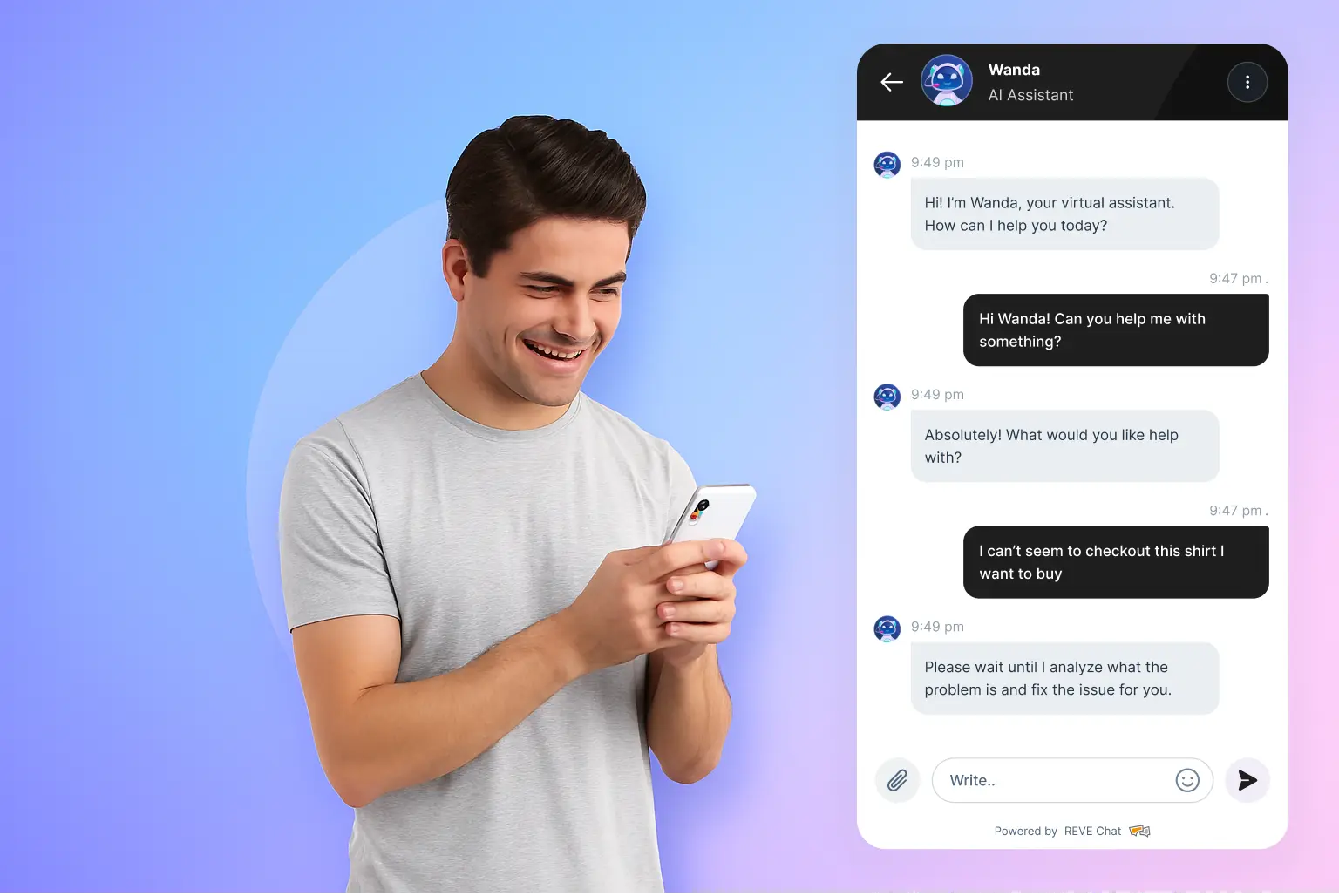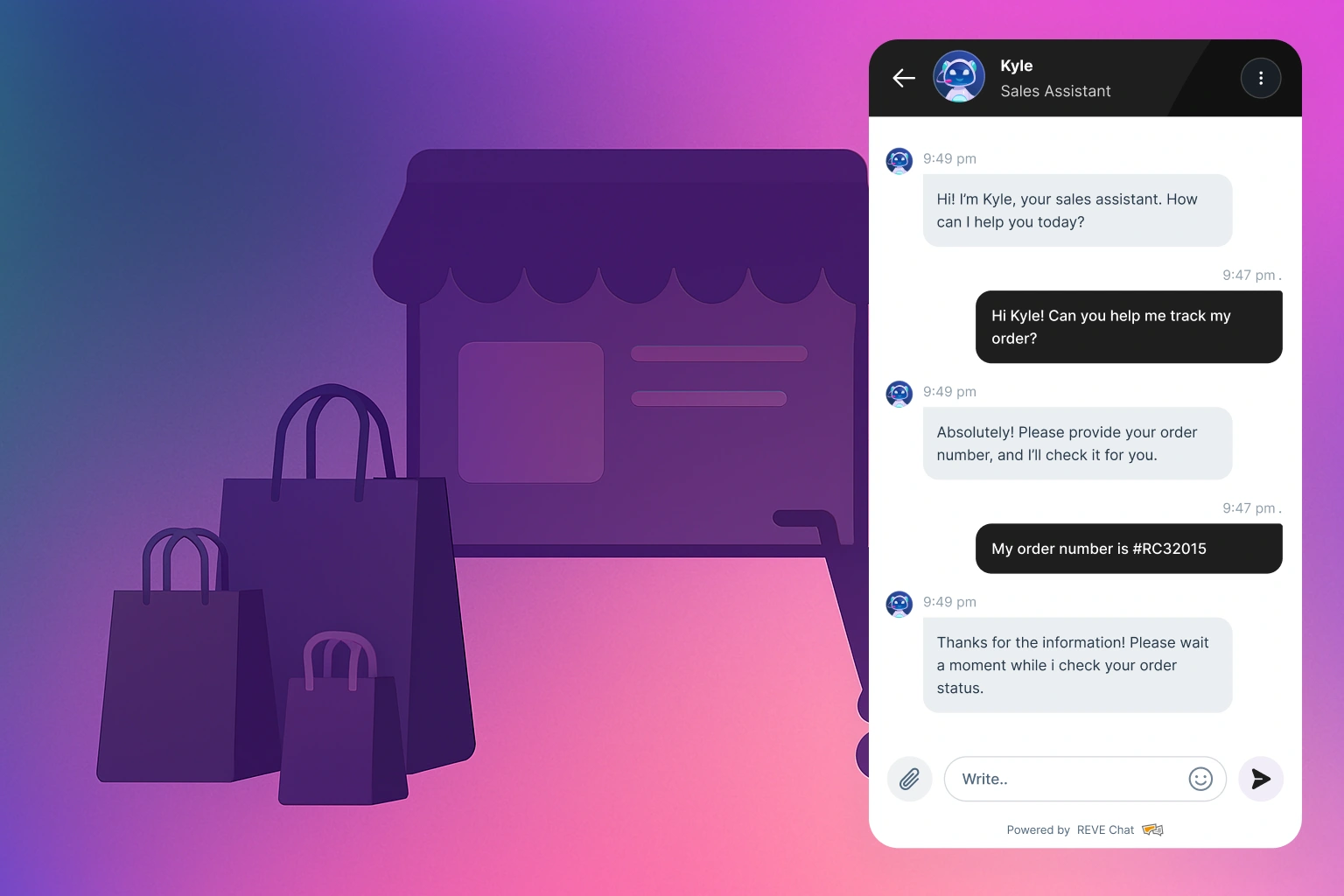Omnichannel Chatbot: Benefits, Features & How to Build
- July 30, 2025
- 13 mins read
- Listen
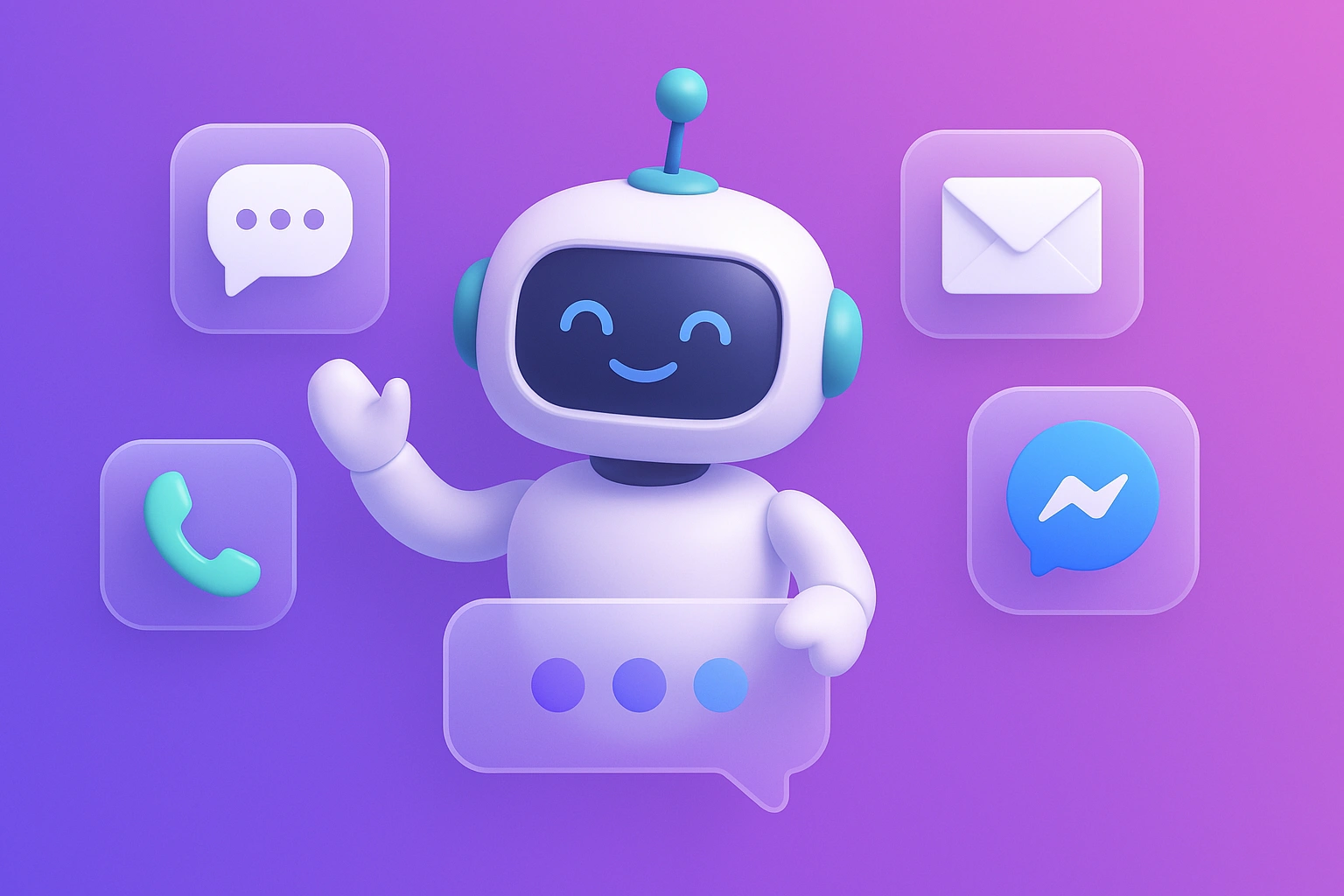
For a business, nothing matters more than increasing customer satisfaction. Omnichannel chatbots can increase customer satisfaction by up to 35% just by keeping conversations consistent across channels.
Most of your customers struggle to get consistent interaction with you. Suppose a customer reached out through your website, and that he connected with your business via Facebook, WhatsApp, or any other channels.
The common problem they face is that the conversations get lost, and the agents are unaware of the context. As a result, the customer needs to repeat themselves again and again. And, this brings the fall of your customer experience and satisfaction. If you are a business owner, you can totally connect to this.
An omnichannel chatbot solves this problem. It helps your team respond faster and stay consistent. In this blog, we’ll break down what an omnichannel chatbot is, how it works, and how it can help your business deliver smarter, more unified support.
What is an omnichannel chatbot?
Omnichannel means all channels, and chatbot means a chatbot is a computer program designed to simulate a conversation with people. Simply put, an omnichannel chatbot means a chatbot that works across all channels like websites, apps, social media, messaging platforms, and more to provide a seamless experience everywhere your customers interact with your business.
Unlike traditional or single-channel chatbots, omnichannel chatbots are built to follow the entire customer journey. They carry the conversation context across every platform, so users don’t need to repeat themselves when they switch from one channel to another. This makes the interaction feel more natural and saves time for both customers and support teams.
What are the benefits of an omnichannel chatbot?
An omnichannel chatbot offers several benefits, including seamless customer experience, centralized data, increased customer retention and satisfaction, and so on.
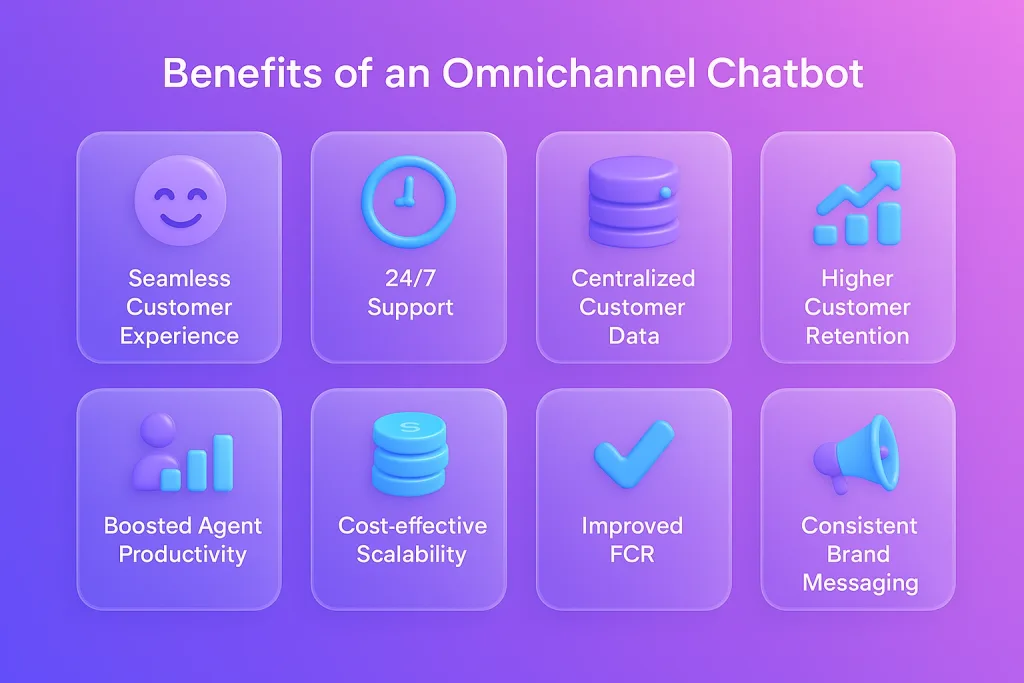
Seamless customer experience across channels
One of the major benefits of an omnichannel chatbot is that it provides a seamless customer experience across all channels. Your customers expect consistency, whether they’re reaching out via website chat, social media, or messaging apps. An omnichannel chatbot ensures uniformity by maintaining the context of conversations across platforms. So users never have to repeat themselves, no matter where they continue the conversation.
24/7 Instant Support Across Touchpoints
Another benefit of an omnichannel chatbot is that it delivers 24/7 support across customer touchpoints. It’s not feasible for human agents to provide round-the-clock service unless the company keeps double-shifting agents. However, omnichannel chatbots are always on. They provide immediate responses at any time of the day, across all integrated channels. This round-the-clock presence improves response time. And keeps users engaged, and increases satisfaction.
Centralized customer data and insights
If your business adopts an omnichannel approach, all interactions are tracked in a unified dashboard. This can help your business better understand customer pain points, behavior, and preferences. Which can inform smarter decisions, improve personalization, and boost marketing performance.
Higher customer retention and loyalty
You can increase customer loyalty when you provide consistent, fast, and helpful customer service. And, you can build that trust by using omnichannel chatbots. Because it remains available and helpful wherever your customers are.
Boosted agent productivity
You can boost 3x more productivity after implementing an omnichannel chatbot. These chatbots can handle repetitive queries and collect basic information before handing over to human agents. And it reduces the workload on your support team and allows them to focus on more complex or high-value interactions.
Cost-effective scalability
Cost-effectiveness is also a major benefit of an omnichannel chatbot. You can service more customers without adding more agents. This allows you to scale support capabilities and a proportional increase in costs.
Improved first contact resolution (FCR)
You can improve first contact resolution by implementing an omnichannel chatbot. Omnichannel bots use customer history and intent recognition to resolve queries effectively on the first interaction. This not only improves customer satisfaction but also reduces operational load.
Consistent brand messaging
Whether it’s on your website, WhatsApp, or Instagram, the chatbot delivers your brand’s voice and tone consistently. This ensures a unified customer perception and strengthens your brand identity.
Key features of an omnichannel chatbot
A well-built omnichannel chatbot is packed with practical features that help businesses deliver fast, consistent, and connected support. Here are the core, must-have features to look for:

Unified conversation history
This feature keeps the entire customer conversation thread visible, no matter which channel the user switches to. Whether someone starts a chat on your website and continues on Instagram, the bot remembers everything. It ensures smoother interactions and saves time for both users and agents.
Channel integration
An omnichannel chatbot connects to multiple platforms, including live chat, WhatsApp, Facebook Messenger, Viber, Instagram, and more. This lets you manage conversations from all touchpoints in one place, without switching tools.
In 2025, businesses using integrated messaging platforms saw a 40% boost in engagement, according to Statista.
Seamless human handover
When the bot can’t solve a query, it automatically hands the conversation to a human agent, without breaking context. The agent sees the full chat history and continues from where the bot left off. This ensures faster resolution and a better experience.
Proactive auto triggers
This feature allows the chatbot to start conversations based on customer behavior. For example, it can send a message when someone spends too long on a pricing page or tries to exit the site. These proactive nudges help boost conversions and reduce drop-offs.
Multi-chatbot deployment
Large businesses often need different bots for different purposes, like sales, support, and onboarding. With this feature, you can deploy and manage multiple bots across departments or channels, all from a single dashboard.
Multilingual support
An omnichannel chatbot should be able to communicate in multiple languages. This helps serve global audiences and improves accessibility without adding extra human resources. Multilingual bots help increase customer satisfaction scores.
Analytics & reporting dashboard
Track chatbot performance in real time. Metrics like response time, resolution rate, chat volume, and customer satisfaction give valuable insights to optimize service and improve business decisions.
Security & compliance controls
Look for features like end-to-end encryption, role-based access control, GDPR compliance, and secure data storage. These help you protect customer information and meet regulatory requirements.
How does an omnichannel chatbot work
An omnichannel chatbot connects different communication channels and customer data into one smooth experience. Here’s how it works, step by step:
Step 1: Integration with multiple channels
The first step is connecting the chatbot to platforms like your website, WhatsApp, Facebook Messenger, Instagram, and others. This is done using APIs or native integrations offered by chatbot platforms. Now, the same bot can talk to users on any of these channels, without needing separate setups.
Step 2: Understanding the customer message
When a user sends a message, the chatbot processes it using Natural Language Processing (NLP) and Natural Language Understanding (NLU). This helps the bot understand the intent behind the message, even if it’s typed informally or contains errors.
For example, “Where’s my order?” and “I didn’t get my delivery” mean the same thing. A good chatbot can tell.
Step 3: Responding with the right answer or action
Once the intent is identified, the bot pulls the right response. This could be:
- A text reply
- A product suggestion
- An update from your backend (like order status)
- A form to collect information
- Or even a file/image/video
The bot can also perform tasks like booking appointments or updating CRM data, depending on how it’s configured.
Step 4: Maintaining context across channels
What makes this omnichannel is the ability to remember the conversation even when a user switches platforms.
For example, if someone starts a chat on your mobile app and comes back later via email, the bot can pick up the conversation from where it stopped, thanks to centralized session tracking.
Step 5: Triggering proactive engagements
Based on user behavior, the chatbot can also act without being asked. If someone is browsing a pricing page for too long or tries to exit the site, the chatbot can automatically pop up with a relevant offer, question, or form. This helps guide users and prevent drop-offs in the customer journey.
Step 6: Escalation to a live agent (if needed)
If the bot can’t solve the issue or senses frustration, it triggers seamless handover to a human agent. All previous messages, actions, and customer details are passed along. So the agent has full context and doesn’t need to ask the same questions again.
Step 7: Logging and reporting
Every conversation and outcome is tracked in a central dashboard. Businesses can see what users asked, what the bot answered, what needed human help, and how fast everything was handled. These insights help improve the bot and your overall customer service strategy.
How to build an omnichannel chatbot? (Step-by-step guide)
Let us show you how you can build an omnichannel chatbot using REVE Chat. With REVE Chat’s no-code platform, creating an omnichannel chatbot takes just a few simple steps. No technical skills needed.
This guide will walk you through it, step by step, from your first login to going live across multiple channels.
Step 1: Sign up
First, sign up for REVE Chat and get your free trial here. All you need is your name, email, and business info to get started.
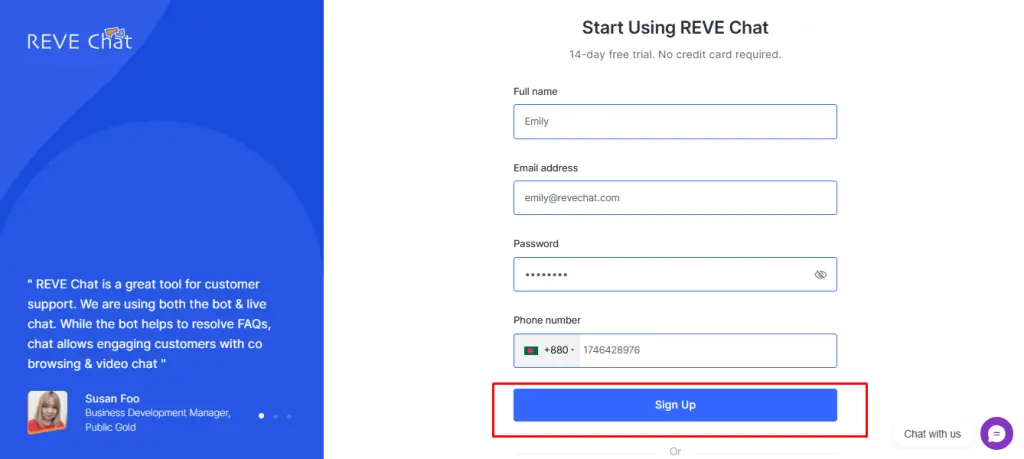
Step 2: Set preferences
Once signed up, you’ll land on a quick setup screen. Here, you can set your preferences such as company name, chatbot goals, and business type.
Not sure about a field? No problem. You can change everything later. The interface is designed to be beginner-friendly.
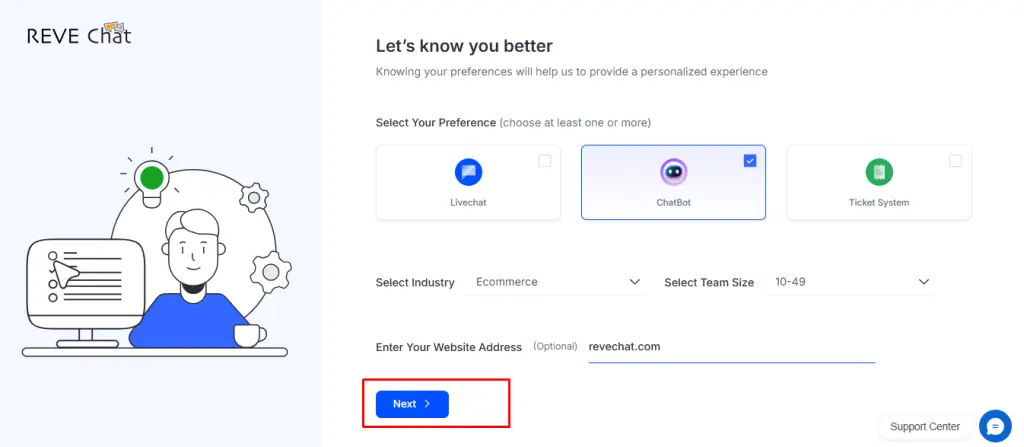
Step 3: Integration
You’re now ready to integrate REVE Chat with your website or preferred channels. On this screen, you’ll be asked to integrate REVE Chat with your site for a seamless chatbot experience. If you are not ready to integrate yet, you can simply click “I’ll Integrate Later” and jump ahead to chatbot creation.
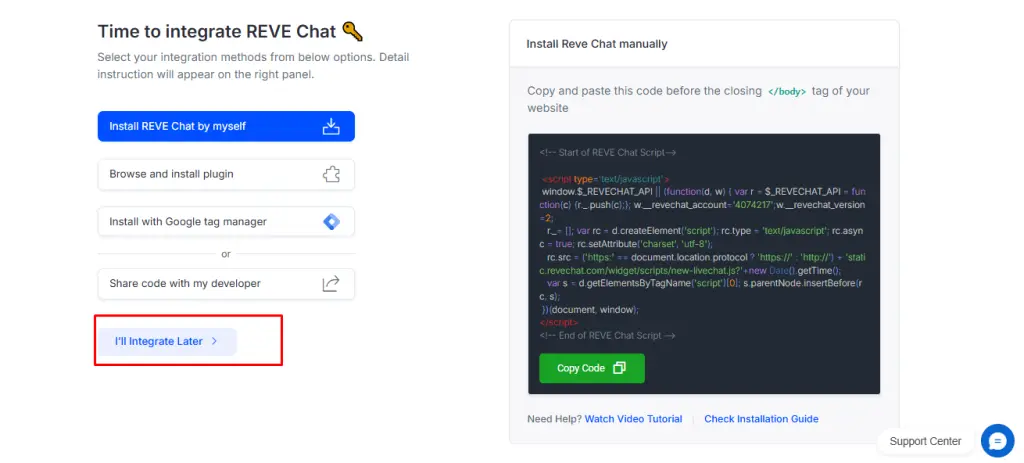
Step 4: Connect your channels
Here’s where the omnichannel magic begins. You’ll be prompted to connect REVE Chat with channels like:
- Website Live Chat
- WhatsApp Business
- Facebook Messenger
- Viber
- Telegram
You can choose to connect them now or skip and do it later. The dashboard allows easy setup at any time.
Step 5: Start building your omnichannel chatbot
Once integration is done (or skipped), it’s time to build your chatbot. From the left menu, click the Chatbot icon (speech bubble). On the top right, click “Create a New Bot”. This opens the chatbot builder screen.
Here, you’ll enter basic info like:
- Bot Name (for internal use)
- Display Name (seen by users)
- Default Language
- Bot Designation (e.g., “Support Bot” or “Sales Assistant”)
- Choose Brain AI for an AI-powered flow or Custom Build for full control
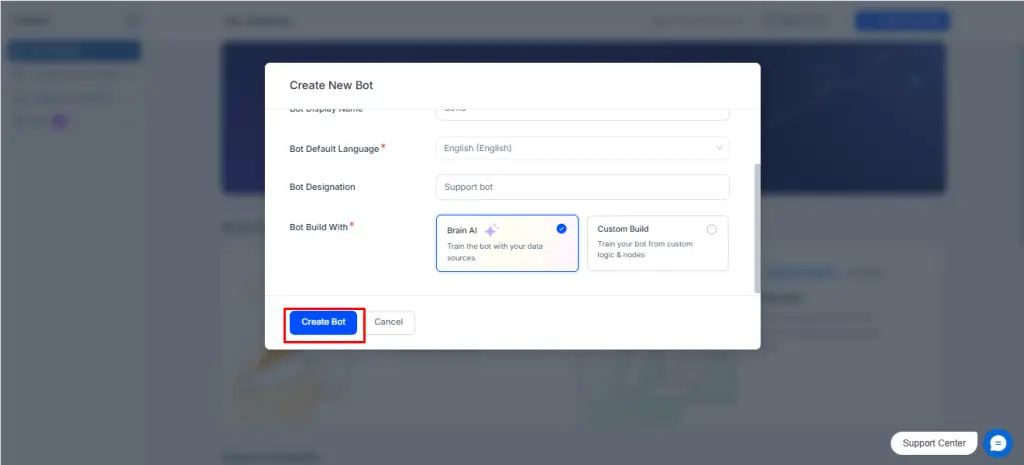
Step 6: Design chatbot flows
This is the fun part! Use REVE Chat’s drag-and-drop builder to design your conversation flows.
You can add:
- Text and image messages
- Quick replies and buttons
- Forms and input fields
- Action blocks like “Send Email” or “Connect to Agent”
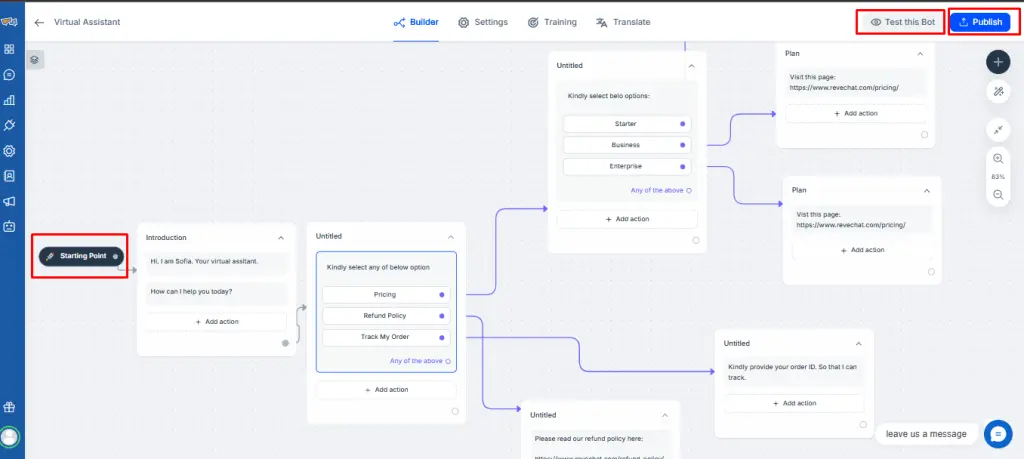
Step 7: Test and publish
Almost there! Click the “Test This Bot” button to preview how it works from the customer’s side. Ask questions, click buttons, and make sure the flow feels right. Need edits? Just go back and tweak the blocks.
Once you’re satisfied, hit “Publish” and your omnichannel chatbot will go live across all your connected channels!
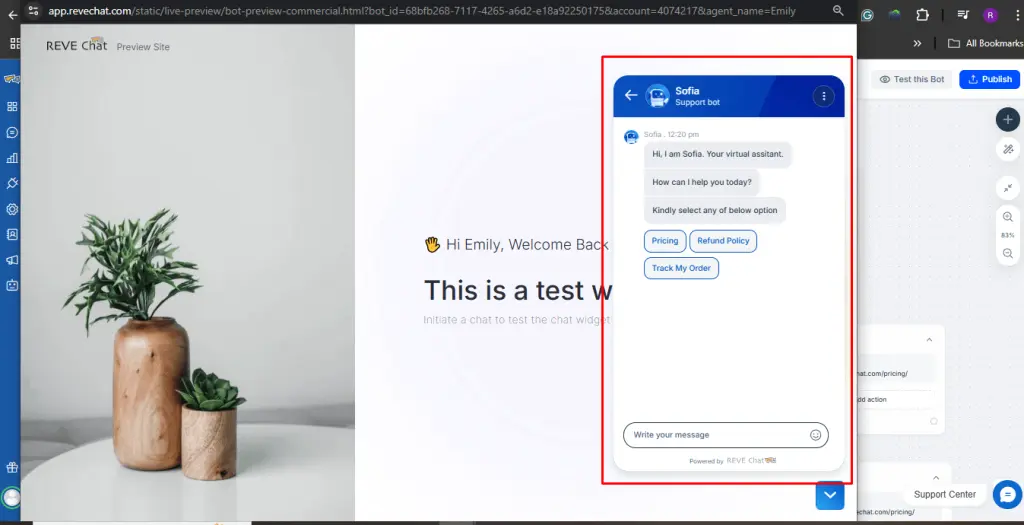
Examples of omnichannel chatbots
Businesses across industries use omnichannel chatbots to improve customer experiences, streamline communication, and boost operational efficiency. Let’s explore how two leading companies, Public Gold and stc, implemented REVE Chat’s omnichannel chatbots to overcome challenges and achieve tangible results.
Public Gold

Industry: Precious Metals & E-commerce
Public Gold is a leading precious metals trading company based in Malaysia, offering a range of gold and silver products through physical outlets and an online store.
The challenge
Public Gold was experiencing a surge in customer inquiries across multiple channels, including website chat, Facebook Messenger, and WhatsApp. Their support team found it difficult to maintain consistent responses, manage high volumes efficiently, and provide real-time assistance to users across platforms.
The solution
With the help of an omnichannel chatbot, Public Gold integrated all major customer communication channels into a single platform. The chatbot handled FAQs, guided users through product purchases, provided real-time gold price updates, and automated lead capture 24/7, without needing live agent involvement.
The results
- 60% reduction in repetitive queries to human agents
- Consistent support experience across channels
- Improved customer satisfaction with faster, round-the-clock responses
- Higher conversion rates from WhatsApp and Facebook channels
stc (Saudi Telecom Company)
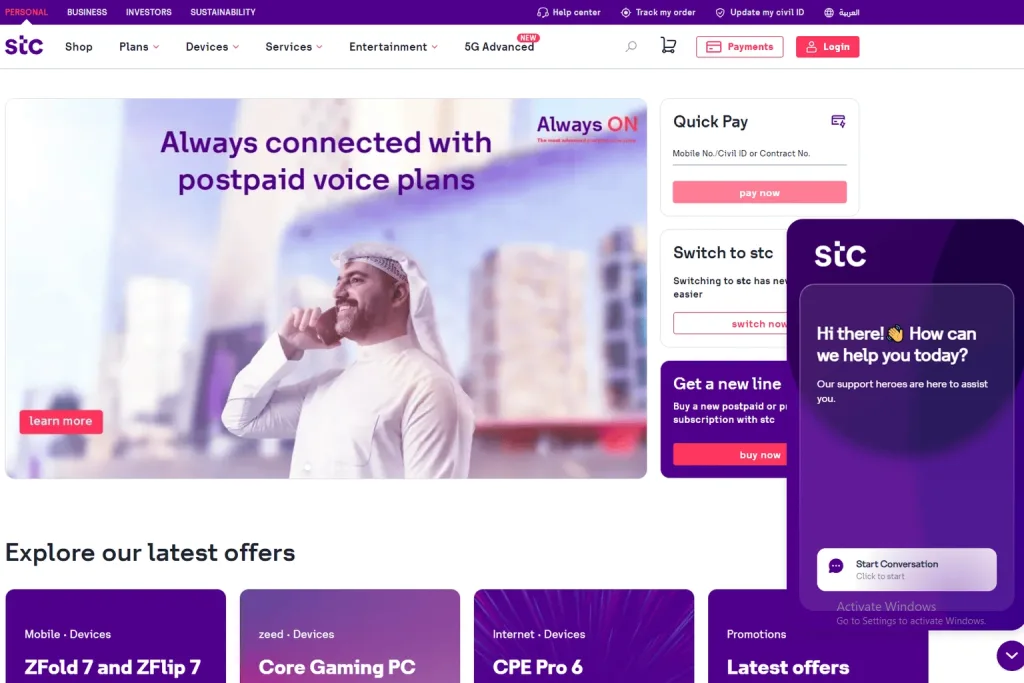
Industry: Telecommunications
stc is one of the largest telecom service providers in the Middle East, offering mobile, internet, and enterprise services to millions of customers.
The challenge
stc needed a scalable solution to manage customer interactions across multiple digital touchpoints, including its website, mobile app, and popular social platforms like WhatsApp and Messenger. Manual support was slowing down response times and impacting customer satisfaction.
The solution
The omnichannel chatbot was deployed to serve as the first point of contact across all digital channels. It automated plan recommendations, payment support, outage information, and basic troubleshooting. For complex issues, the chatbot handed over chats to live agents smoothly, preserving full chat context.
The results
- 3X faster first-response time
- 40% increase in chatbot-led customer resolutions
- Reduced ticket backlog for the support team
- Enhanced digital engagement with minimal customer effort
Best practices to implement an omnichannel chatbot
A successful omnichannel chatbot isn’t just about being present on multiple platforms. It’s about delivering a connected, meaningful experience across them. Here are some best practices to guide your implementation:
Understand your customer journey
Before launching your chatbot, take time to map out how customers move across your channels. Are they starting on social media and ending up on your website? Do they often switch between mobile and desktop? Understanding these paths helps you position the chatbot in the right places and offer the most relevant support.
Ensure consistent conversations
No matter where your customers engage, be it WhatsApp, your website, or Instagram. The chatbot should sound and behave the same. Consistency in language, tone, and information builds a sense of familiarity and trust with your brand.
Offer seamless human handover
Chatbots can handle a lot, but they can’t do everything. When an issue gets complex, make sure your bot knows when to pass the conversation to a live agent, without forcing the customer to repeat what they’ve already said. This keeps the experience smooth and frustration-free.
Start with key channels, then expand
You don’t need to be everywhere on day one. Begin with the channels your customers use most, like your website or Facebook. Once you’ve optimized those experiences, you can expand to other platforms like Instagram or Telegram.
Keep improving with feedback
An omnichannel chatbot isn’t a set-it-and-forget-it tool. Use chat logs, performance metrics, and customer feedback to spot gaps and improve the bot’s responses over time. The more you refine it, the better it performs.
Conclusion
Omnichannel chatbots bring all your customer conversations, from your website, Facebook, WhatsApp, and more, into one unified platform. In this blog, we’ve covered how they work, their essential features, and real examples of how businesses are using them to improve support and engagement. They’re no longer optional; they’re key to delivering fast, consistent service across every channel.
As customer expectations grow, businesses need smarter solutions to stay ahead. An omnichannel chatbot ensures you’re available everywhere, without losing context or quality.
Ready to offer seamless support across all channels? Book a free demo with REVE Chat and build your omnichannel chatbot, no coding required.
Frequently Asked Questions
Here are the four types of chatbots-
- Rule-based chatbots: Operate on pre-defined flows and scripts.
- AI-powered chatbots: Use machine learning and NLP to understand and respond intelligently.
- Hybrid chatbots: Combine rule-based logic with AI capabilities.
- Voice bots: Enable spoken interactions through platforms like Alexa, Siri, or IVR systems.
The 4 C’s represent the foundation of a successful omnichannel strategy:
- Consistency – Unified messaging across all platforms.
- Convenience – Easy access to service from any channel.
- Context – Retaining conversation history and preferences.
- Continuity – Ensuring a seamless experience when switching channels.
The key pillars include:
- Customer-Centricity – Putting the customer at the center of every touchpoint.
- Data Integration – Sharing data across all platforms for unified insights.
- Channel Optimization – Using the right channel for the right interaction.
- Technology Enablement – Leveraging tools like CRM, chatbots, and analytics to power the experience.
If you receive a high volume of support requests, engage users across different platforms, or want faster response times and reduced support costs, an omnichannel chatbot can be very effective. Many businesses see improved retention and efficiency with these bots.
They often address FAQs, order tracking, returns, account info, lead capture, and even assist with payments or product suggestions. For queries beyond their scope, seamless routing to human agents keeps the experience smooth.



